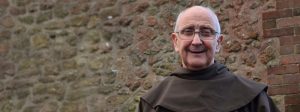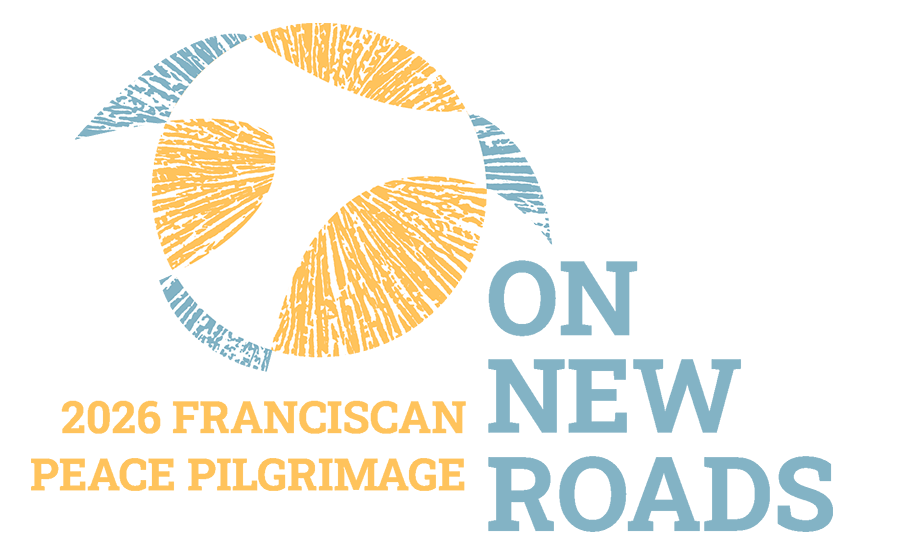Mary the God-bearer
The Franciscan Icon at Alnmouth Friary
Introduction to Icons: Windows of Wonder and Grace
Icons are not simply religious art. They are visual theology – prayer painted in colour and gold. In the Eastern Christian tradition, icons are known as windows into heaven, offering not an escape from the world, but a re-seeing of the world in the light of eternity. They do not illustrate reality from a human point of view; rather, they invite us to encounter God’s perspective.
An icon does not ask, “What do you see?”
but “How do you allow yourself to be seen?”
In this way, the icon becomes a threshold- a door through which divine grace meets human longing. Faces are elongated, eyes are widened, lips closed in contemplation, hands turned in blessing. The viewer is drawn into stillness and awakened to the mystery of holiness already present.
Icons reverse worldly expectations.
They invite us to sit, to be seen, to receive.
You may wish to pray with this icon for a number of days as you prepare to mark this Advent period.
You can download a PDF of the Icon here
Mary as Theotokos: The God Bearer
The title Theotokos (Greek: Θεοτόκος) means God-bearer, the one who carried in her womb the eternal Word made flesh. This term, confirmed by the Council of Ephesus in 431 AD, defends the mystery that Jesus is both fully human and fully divine.
To call Mary Theotokos is not to glorify her above all, but to affirm the unity of Christ’s person – true God and true man, held together in her womb.
Icons of the Virgin of the Sign are rooted in Isaiah’s prophecy:
“The Lord himself will give you a sign.
Behold, the virgin shall conceive and bear a son…”
(Isaiah 7:14)
In this tradition, Mary is depicted upright, hands raised in prayer, with Christ shown in her womb- clothed in glory, bearing the scroll of the Word. The image tells a silent truth: that the womb of Mary has become the meeting place of heaven and earth.
She is Platytera tōn Ouranōn – “ More spacious than the heavens”– because within her, the uncontainable God is contained.
The Mother of God
The Alnmouth Friary Icon
Commissioned by the Brothers of the Society of St Francis in memory of Br Gordon SSF and Br Harry SSF, this icon by Magdalena Dellow is rooted in deep Franciscan and Marian theology. It brings together Our Lady, St Francis, and St Clare, encircled by symbols of creation and eternity. This icon is both a prayer and a proclamation.
Features and Meanings
- Mary’s Mandorla: Radiating from darkness to light, it reflects the journey of grace through the womb – where God begins to renew the world. She is shown in surrender, her open hands allowing grace to pass through her.
- The Christ Child: Shown in priestly garments, blessing and teaching from within her womb. His golden mandorla affirms his divinity. His face, wise beyond infancy, reminds us of his pre-existence and eternal mission.
- Twelve Stars, Sun, and Moon: Evoke the Book of Revelation and Franciscan love for creation. They symbolise the Church, Israel, and the cosmic scope of Christ’s coming.
- St Francis: Holds the Gospel and Tau Cross – symbols of his radical embrace of Christ crucified and risen.
- St Clare: Carries a burning lamp and Tau staff – light and leadership, contemplative flame and faithful presence.
- Mandorla Colours: Blue and gold surround Christ; red and earthy tones surround Mary – divine and human meet in mutual giving.
- Seraphim and Cherubim: These fiery and luminous beings recall Francis’ vision at La Verna and the heavenly praise surrounding Mary and her Son.
Every element in this icon speaks of incarnation, intercession, and the transformation of matter by grace.

